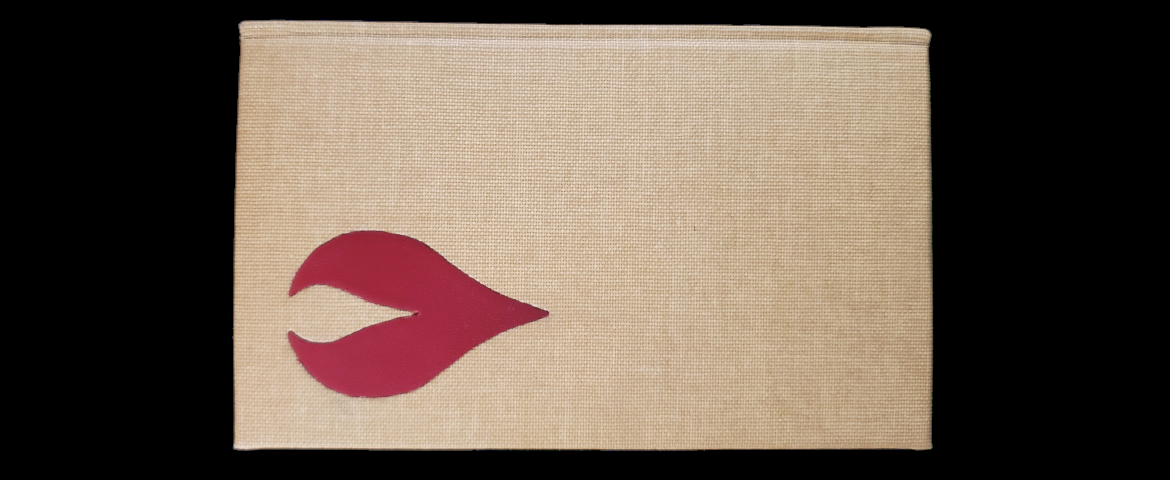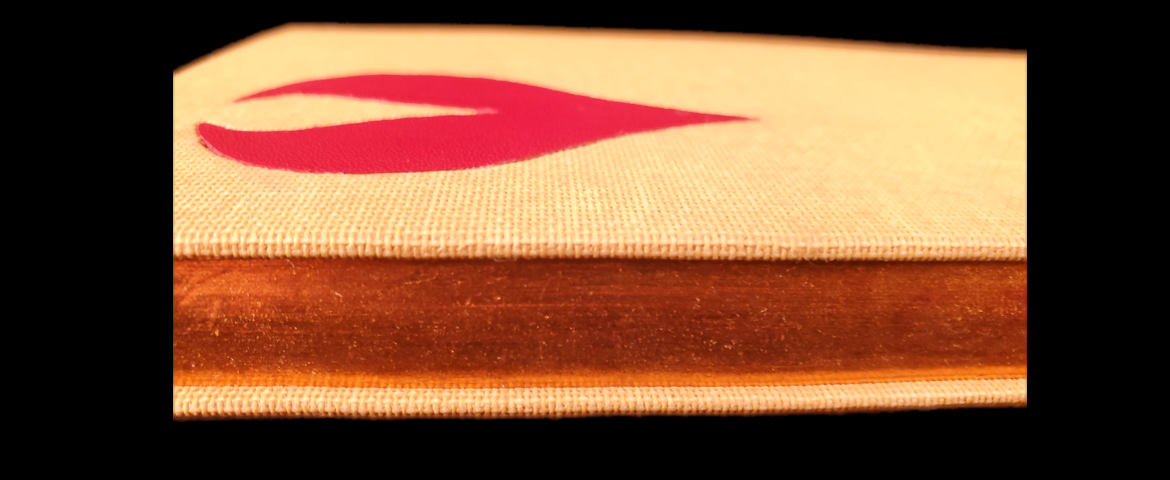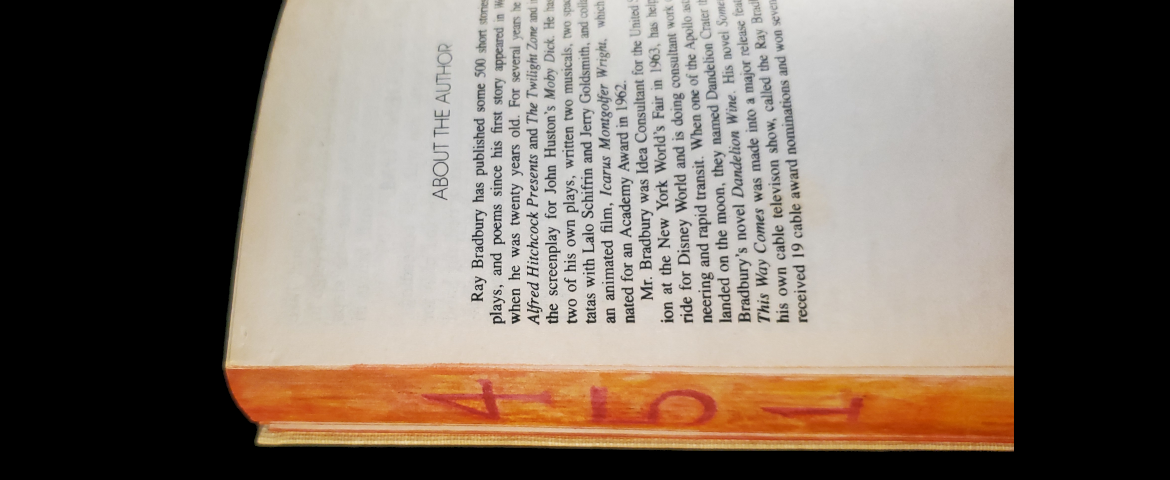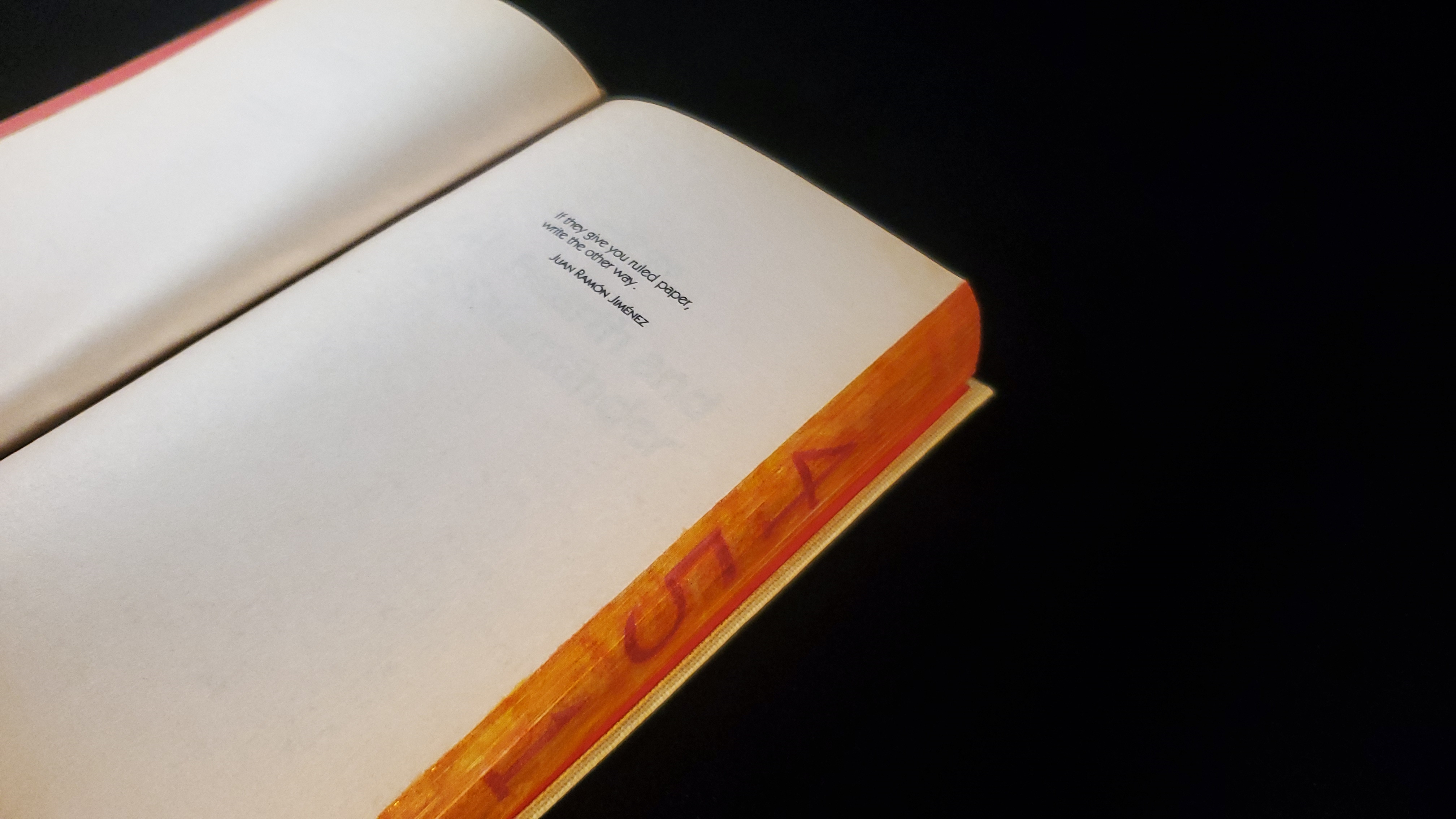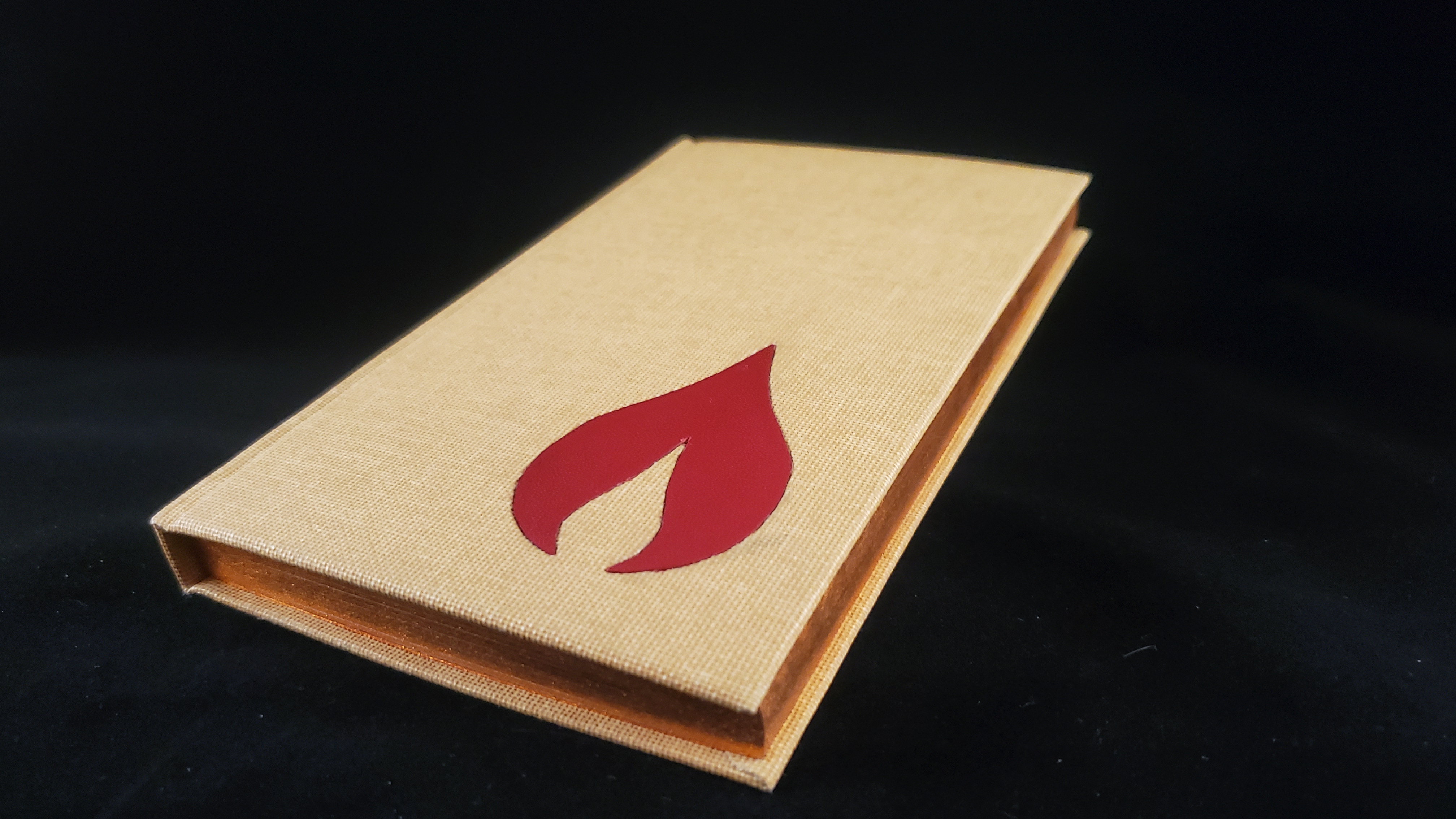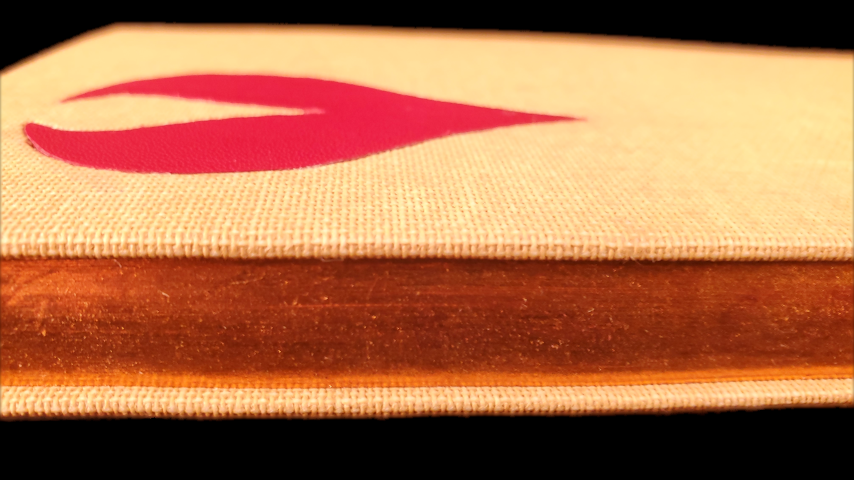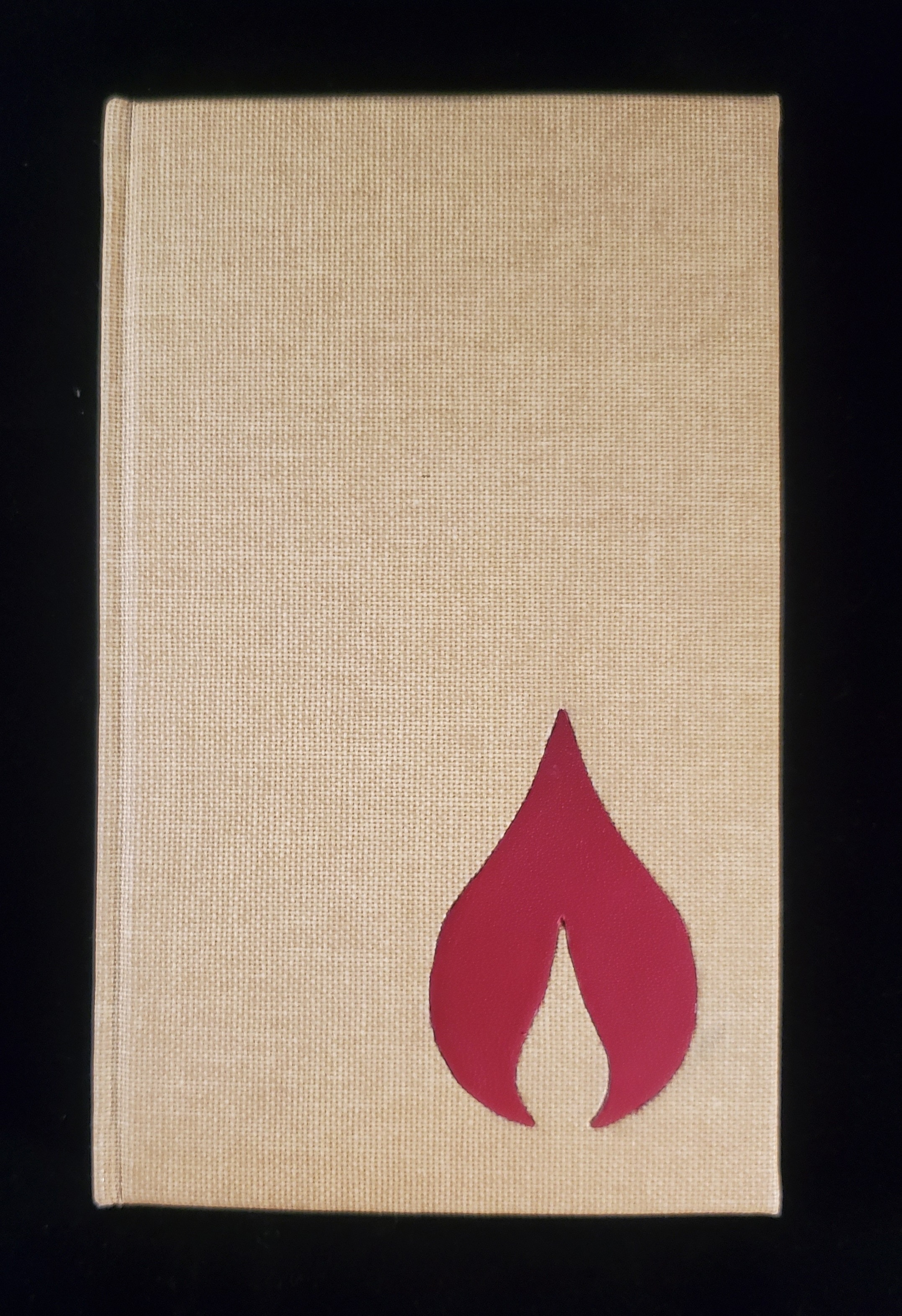Fahrenheit 451 - Rebinding
Re-binding a found copy of Fahrenheit 451
There's a Free Little Library not far from my house where I found a copy of Fahrenheit 451. It was clearly either well-loved or the exact opposite, and was full of notes, dog-eared pages, and failing adhesive, and its front cover was almost entirely missing. I had had conservation on my mind lately and this particular book seemed like an apt one to start with, so I took it home.
Frankly, it sat for quite a while. I wasn't sure how to start or what exactly I wanted to do with it, and I always have another project or twelve to distract me anyway. I had been wanting to try gilding the edges on a book - I had some varieties of foil from work that would otherwise have been scrap - and in researching the process I discovered the history of hidden fore-edge painting. It was entirely new to me and fantastically appealing.
The traditional, likely apocryphal story of the invention of hidden fore-edge paintings involves a king and a member of court, both of whom were avid readers, but the court member often borrowed volumes from the king and failed to return them. Eventually the fed-up king meets with a master bookbinder to find a way to apply a clandestine mark of ownership to identify any unreturned loans; the solution is a painting applied to the fore-edge of the book in delicate watercolor which is then gilded over. Because the paint seeps slightly into the paper, the painting becomes visible again as the pages are fanned. Ultimately, the king catches the court member in a righteously satisfying climactic scene.
Once a roll of copper foil and a side of red leather caught my eye, the rest of the creative decisions were resolved quickly, in spite of the fact that I'm not much of a painter. A relatively nonrepresentational design was in order, so that I could ensure the presence of the painting itself would be the focus, rather than the technical skill in the painting.
Fore-edge painting is a strange process, and wasn't without its hurdles - namely the quality of the paper in a mass-market paperback, which is clearly not meant to accept watercolors - and the gilding required much trial and error, but I'm wonderfully pleased with the result. Sooner or later, I plan to return this copy to the Free Little Library I got it from. I'd love to think of it continuing to circulate with as much extra life as I was able to put back in it.
